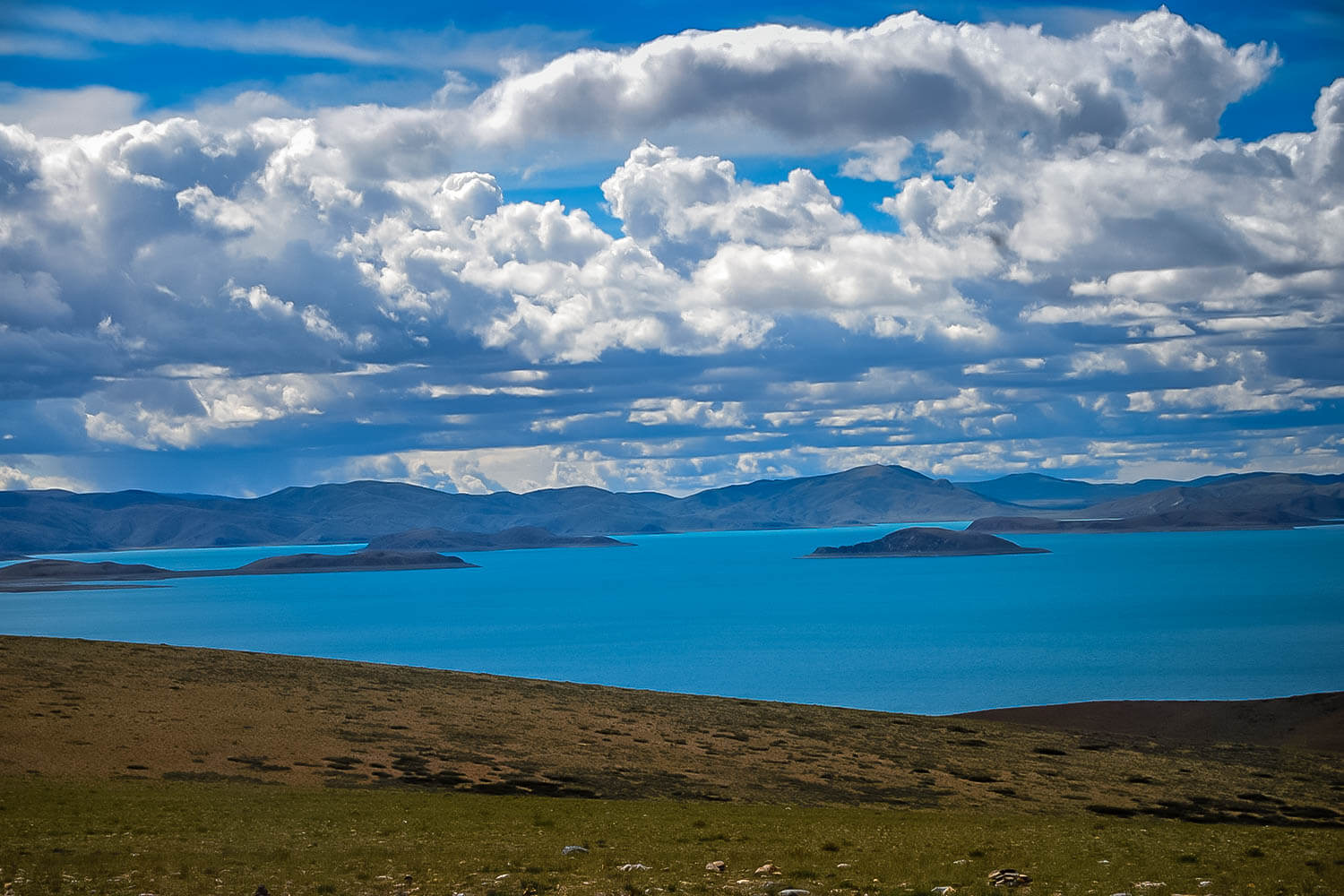Stands at (6714m / 22,027 ft) above Sea level. The four faces of the holy mountain are distinctive. An aerial photograph of Kailash bears an uncanny resemblance to the Shivalinga in Shiva's Temple. Deep clefts on either side isolate it from the rest of the Kailash Range, making it one of the few mountains on earth where a Parikrama (kora in Tibetan) is possible. It is said that after its Parikrama, one is freed from the Vicious cycle of birth, death and rebirth. After 21 Parikramas of the traditional route, one becomes eligible to undertake the inner Parikrama or the middle circuit, which runs high across the four faces of the Kailash Parvat.
For Jains, Kailash is the Ashtapada, where Rkishabhanatha, the first Tirthankara, achieved enlightenment. Buddhists believe that the legendary Lord Demchog (complete with trident and damaru) dwells on Kang Rimpoche (Kailash) with his scarlet consort DorjePhangmo. Milarepa, the Buddhist spiritual leader, visited Kailash in 1093; he was credited with creating the supreme Tibetan mantra "Om Mani Padme Hum". The ancient Tibetan shamanistic faith, Bon-Po, holds the mountain holy and says their God moved Tise, the 'nine-storey swastika mountain' from north-east Tibet to its present location. The Bon-Po does the kora counter-clockwise, whereas others do clockwise. Thus, four religious belief systems: Hinduism, Jainism, Buddhism and Bon-Po - hold the mountain holy.
This voyage is continuing since the immemorial period. Both holy Mount Kailash and sacred Lake Mansarovar are mentioned in SkandaPurana, Vishnu Purana, Ramayana and Mahabharata. The Vedic and factual references affirm that the origin of the human civilization, "Indus valley civilization" was initiated from this sacred place which has made the importance of this place prominent.
Om devotees have established this voyage as the journey to the heaven as it used to be accomplished only either by a few people or by the powerful personalities in the Vedic period. Perhaps, because of this reason, the belief that one couldn't go to the heaven with the physical presence, has been continued.
The Aryans have agreed Lord Shiva as the Rudra, the powerful form of the God. As the Brahma, the creator, the Bishnu, the preserver, and the Maheshwora, the destroyer, accepted the Rudrawithin them when he was performing the Tandava dance in the Himalayas, since than the Vedic Aryans have taken the Rudra as the demolisher. Because the Vedic philosophy states that the destruction of the universe is the creation of the new one; the Aryans have often considered lord Shiva as the destructive force as well.
This mountain was said to be the navel of the earth and the axis of the universe and from its summit flowed a mighty river that fell into a lake, and then divided to form four of the great rivers of Asia. It is the holiest of all mountains, revered by millions of Hindus, Buddhists and Jains as the home of their God. In metaphysical form, it was called Meru; in its earthly manifestation it was Kailas, or Kang Rimpoche (Precious Jewel of Snow), an isolated snow-peak on the Tibetan plateau. For more than 2,000 years, it has been the lodestone — the all but unattainable goal — that draws towards itself all the devotional cults that seek the attainment of bliss through self-sacrifice, austerity and penance.
The mountains in Tibet are chiefly composed of conglomerates - large quanti ties of rounded water-worn shingle cemented together with clay through age and pressure. All the way from Taklakot to Mana sarovar, the country is flat stony desert. In geological terms, Kailash stands alone, the world's largest deposit of tertiary conglomerate.








